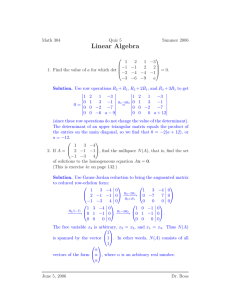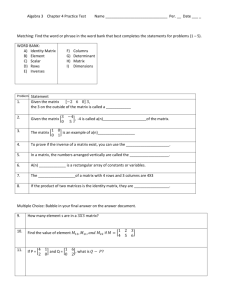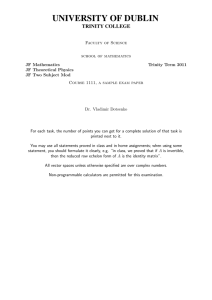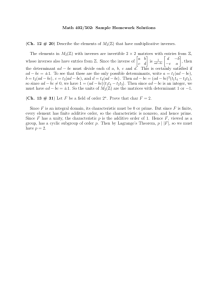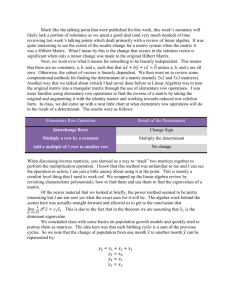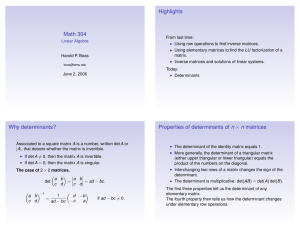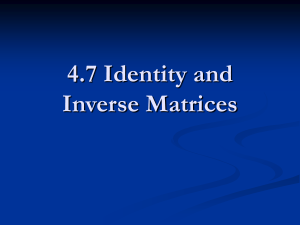Applied Algebra
advertisement
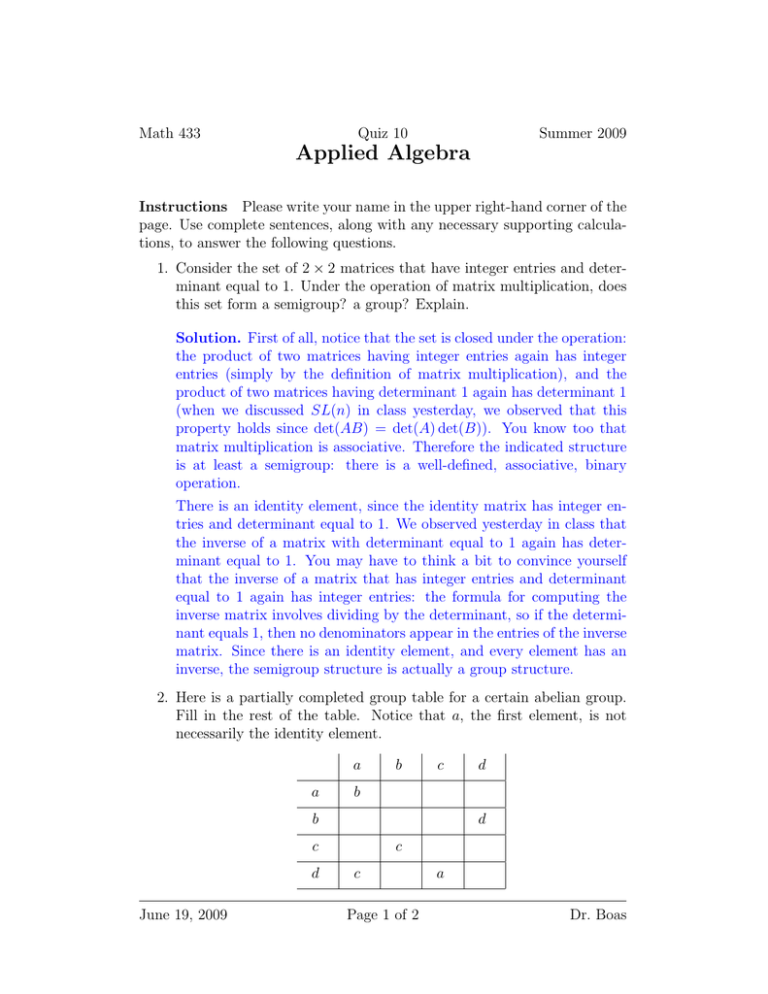
Math 433 Quiz 10 Summer 2009 Applied Algebra Instructions Please write your name in the upper right-hand corner of the page. Use complete sentences, along with any necessary supporting calculations, to answer the following questions. 1. Consider the set of 2 × 2 matrices that have integer entries and determinant equal to 1. Under the operation of matrix multiplication, does this set form a semigroup? a group? Explain. Solution. First of all, notice that the set is closed under the operation: the product of two matrices having integer entries again has integer entries (simply by the definition of matrix multiplication), and the product of two matrices having determinant 1 again has determinant 1 (when we discussed SL(n) in class yesterday, we observed that this property holds since det(AB) = det(A) det(B)). You know too that matrix multiplication is associative. Therefore the indicated structure is at least a semigroup: there is a well-defined, associative, binary operation. There is an identity element, since the identity matrix has integer entries and determinant equal to 1. We observed yesterday in class that the inverse of a matrix with determinant equal to 1 again has determinant equal to 1. You may have to think a bit to convince yourself that the inverse of a matrix that has integer entries and determinant equal to 1 again has integer entries: the formula for computing the inverse matrix involves dividing by the determinant, so if the determinant equals 1, then no denominators appear in the entries of the inverse matrix. Since there is an identity element, and every element has an inverse, the semigroup structure is actually a group structure. 2. Here is a partially completed group table for a certain abelian group. Fill in the rest of the table. Notice that a, the first element, is not necessarily the identity element. a a b c b b d c d June 19, 2009 d c c Page 1 of 2 a Dr. Boas Math 433 Quiz 10 Summer 2009 Applied Algebra Solution. Here is the completed table: a b c d a b a d c b a b c d c d c b a d c d a b Here is some explanation of how to figure out the missing entries, in case you had trouble. The b row of the partial table shows that bd = d, so b must be the identity element. Therefore you can fill in the b row and the b column. There is then only one missing entry in the bottom row, which has to be the missing letter b. There is one missing entry in the first column, which has to be the missing letter d. It is given that the group is abelian, which means that the group table is symmetric. The rest of the a row and the rest of the d column can be filled in by symmetry. The remaining entry can be filled in because there is only one missing letter in its row. Remark The group represented by this table is the Klein 4-group, which we discussed in class. The three elements other than the identity all have order 2. June 19, 2009 Page 2 of 2 Dr. Boas


